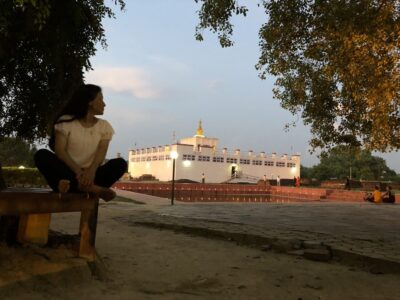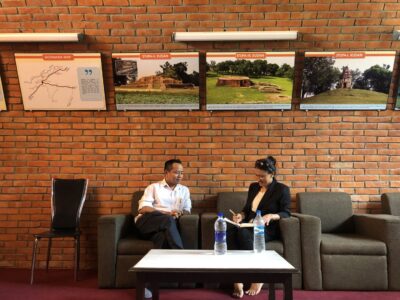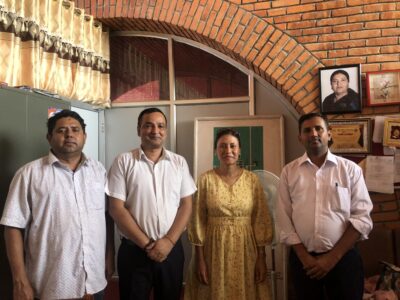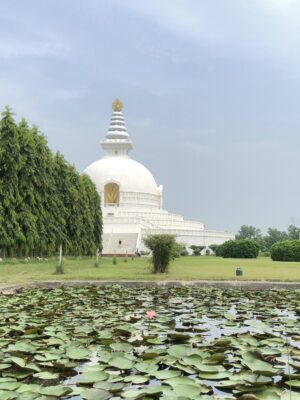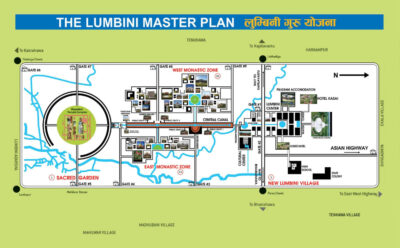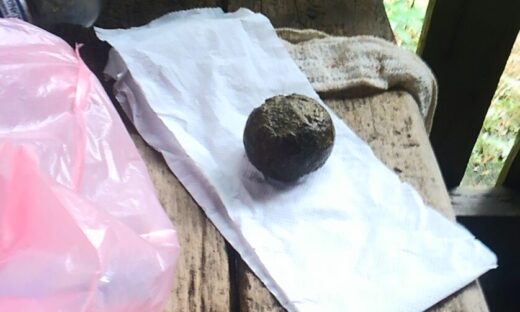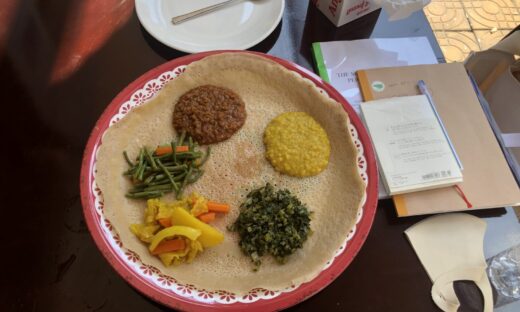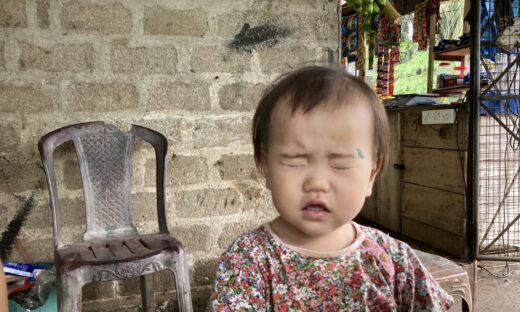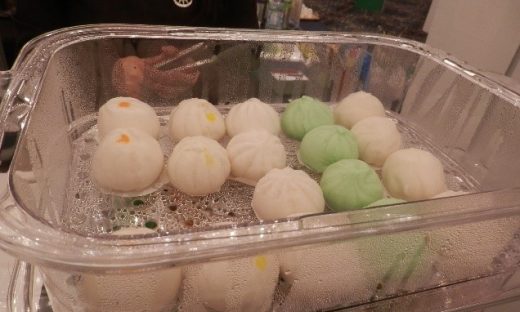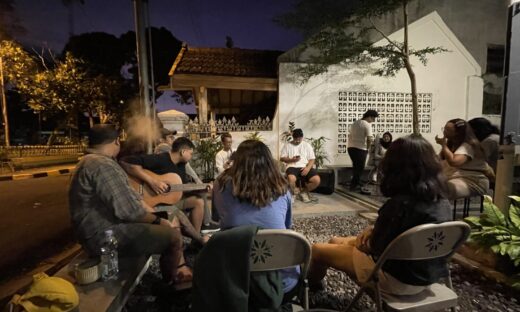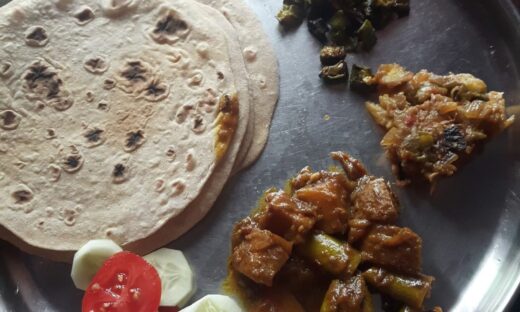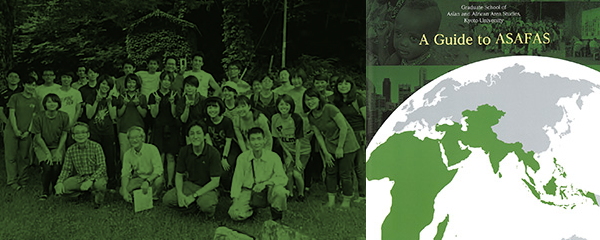アジア・アフリカ地域研究情報マガジン 第210号
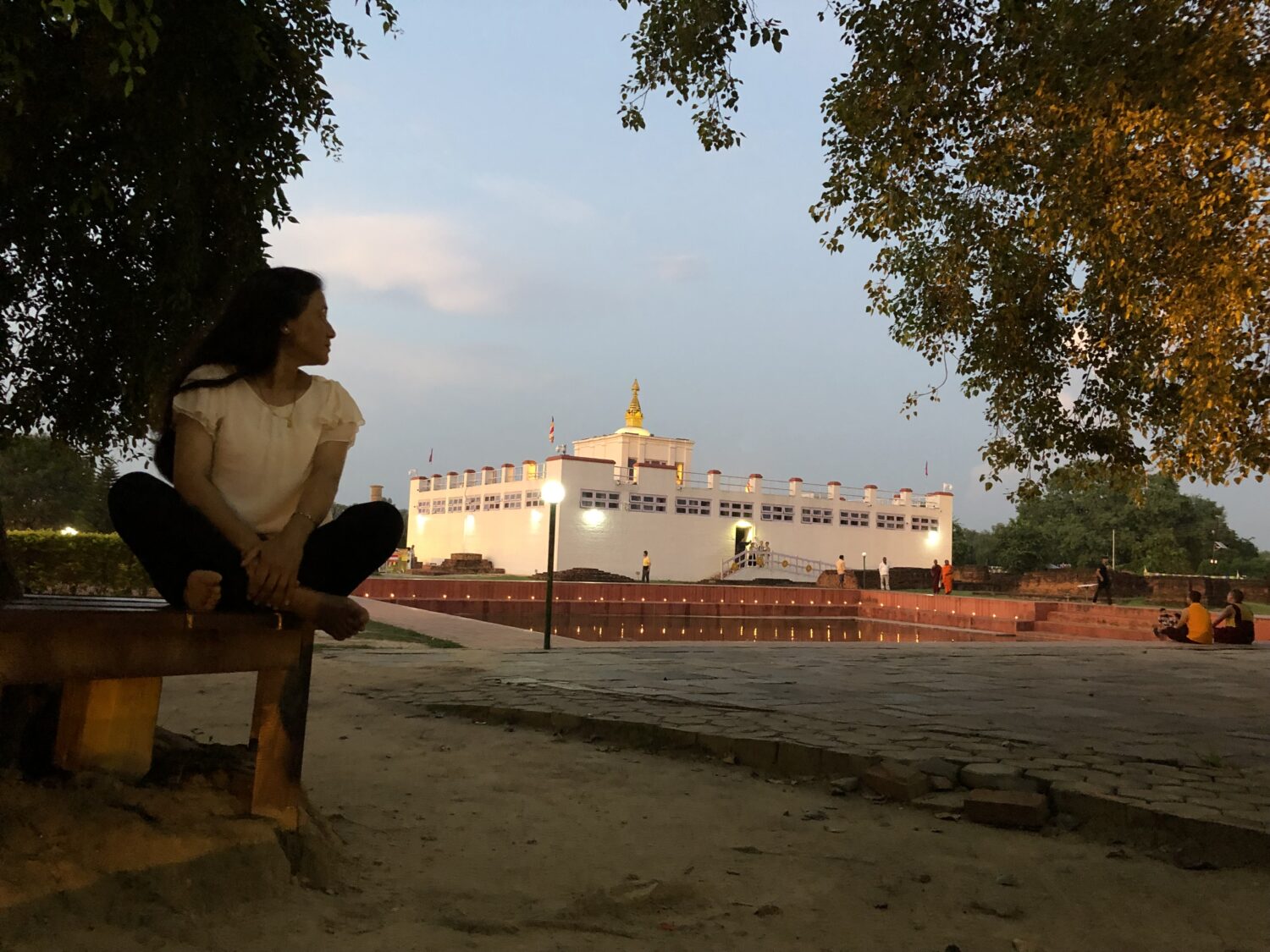
■■■ December 2020 第210号 ■■■■■■■■■■ アジア・アフリカ地域研究情報マガジン ASAFAS INFOrmation Magazine https://www.asafas.kyoto-u.ac.jp/ ■■■■■■■■■■■■■■【発行部数 910】■■■■■ __今月号の目次 Contents__________________ □フィールド便り........ Kenzo Tange’s "Master Plan" in Lumbini, Nepal □メルマガ写真館............... Street Dogs in Pokhara □お知らせ.......................... オープンキャンパス、入試日程 □最近の出来事................... Facebook・Twitter情報 □編集子より _______________________________ ========================================================= ■ フィールド便り Letter from the Field ========================================================= 「Kenzo Tange’s "Master Plan" in Lumbini, Nepal」 Thapa Sharmila (Division of Global Area of Studies)This essay is based on the fieldwork and some on-site interviews carried out in September 2019 in Lumbini. The main purpose of this fieldwork was to explore how the Lumbini, the holy birthplace of the Lord Buddha and Koya town (especially Koyasan/ Koya mountain is very important place for Shingon Buddhism in Japan) of Wakayama prefecture, Japan have been twinned as sister cities. To gather reliable information about the activities between two sister cities, I visited the office of Lumbini Development Trust (LDT), which was formed by the Government of Nepal as provisioned by the LDT Act 2042 in 1985. I had some meetings with the authorized person of LDT and discussed the condition, activities and contribution of both countries. From them, I came to know the facts and inter-connections between Lumbini and Japan on which I was unaware of before. I was surprised that a Japanese architect Mr. Kenzo Tange who is notable for designing the Yoyogi National Gymnasium for the 1964 Tokyo Olympics lead the master plan for preservation and development of cultural heritage in Lumbini. It means the relation of Japan with Lumbini is not strengthened only after sisterly relation with Koya town, but it has had a long relationship since the early 1970s. Tange's master plan is a land-use plan focused on one or more sites within an area that identifies access, general improvements and needed infrastructure, and intended to guide growth and development over several years through a number of phases. The master plan is based on the Buddhist symbolism of geometric shapes and the path to enlightenment. It covers an area of 4.8 square miles and oriented along the north-south axis it encompasses three zones: (1) The New Lumbini Village, (2) The Cultural/ Monastic Zone, and (3) The Sacred Garden which cover an area of 1.6 square miles per zone. LDT is now responsible for the implementation of the master plan and overall development of Lumbini Buddhist sites by receiving fund from the Government of Nepal, national and international Buddhist and non-Buddhist organizations. I observed the Japanese temple, monastery, Japan Peace Stupa, and two Japanese hotels which are located in the northern part of Lumbini. The impressive glittering white World Peace Pagoda was constructed by Japanese Buddhists at US$1 million. The shining golden statue in that stupa portrays the Buddha in the posture he assumed when he was born. According to an officer of LDT, "when a Japanese monk Mr. Yonataka Nawatame (grave was near the base of the stupa) was murdered by anti-Buddhist extremists during the construction of the monuments, the number of Japanese tourists were declined, but now it is becoming normal as before". Besides this, Lumbini Hotel Kasai, opened by Mr. Tokusin Norbu Kasai in 2005, has been providing free meals to around 3,000 commoners on the occasion of Buddha Jayanti every year for the past 15 years. Nepal relation with Japan is not only based on the bilateral, or exchange of culture and people but also exchange of sentiments. One of LDT officers said that during the Great East Japan Earthquake of 11 March 2011, LDT had organised programme for praying and lightening butter lamp in Mayadevi Temple for suffered people in Japan as well as LDT sold Japanese green tea for charitable activities in Nepal to help the victims. Such an exchange of sympathy or sentiments shows the love and attachment of Nepali people for Japanese nationals. Also, as an appreciation, two mayors, Dr. Tadatoshi Akiba from Hiroshima and Mr. Tomihisa Taue from Nagasaki, were awarded jointly by the "1st Gautam Buddha International Peace Award" on 17 May 2011 in Lumbini by Dr. Ram Baran Yadav, Former President of Nepal. Almost after 46 years of informal relations with Lumbini, the Ambassador of Nepal to Japan signed a sisterly collaboration agreement between Lumbini and Koyasan on 20 September 2015 in Japan and bond with new relationship. For drawing attention on the most important aspects of the sisterly agreement between two UNESCO Heritage Sites, the second signing ceremony was held in Lumbini on 27 October 2016. These two cities share the commonality of Buddhist atmosphere where a large number of Buddhist and peace-loving people visit every year to pay homage to the Lord Buddha and to benefit from Buddha's timeless teaching of non-violence, compassion and universal brotherhood. To mark a happy beginning of the sister city relations, Mr. Tokushin Norbu Kasai, the Goodwill Ambassador of LDT and Chairman of Lumbini Hotel Kasai also declared a four-year scholarship for one Nepali master level student in Koyasan University, in Koya town. Therefore, in soft power perspective through such activities, Japanese "sphere of influence" has been increasing to the concerned cities and overall; especially Architect Tange's contribution for developing the master plan of Lumbini is remarkable. During the fieldwork, I found out that there seemed not having regular contact among local people, officials of sister associations and sister cities as per the expectation when they signed MOUs (Memorandum of Understandings).
(上記フィールド便りに関する写真は次のFacebookでご覧ください。) https://www.facebook.com/asian.african.area.studies/posts/3688171947895797Photo 1: Evening View of Mayadevi Temple
Photo 2: Interviewing with LDT Information Officer Mr. Hari Dhoj Rai
Photo 3: Meeting with LTD Planning Head Engr. Saroj Bhattrai
Photo 4: World Peace Pagoda, Lumbini
Figure: Tange’s Lumbini Masterplan ========================================================= ■ メルマガ写真館 Photo Gallery ========================================================= 「Street Dogs in Pokhara」 Sese Ma (Division of Global Area Studies) Outside the Prithvi Chowk Bus Stop in Pokhara sub-metropolitan city in Kaski district of central Nepal, dogs start to・・・ (続きと写真は次のURLをご覧ください。)
第175回 「メルマガ写真館」(上記の写真館については次のFacebookでもご覧いただけます。) https://www.facebook.com/asian.african.area.studies/posts/3688064014573257 ========================================================= ■ お知らせ Announcements ========================================================= ────────────────────────────── □ 専攻別 2021年度 オープンキャンパスの開催 ────────────────────────────── *詳細情報と申込方法は研究科ウェブサイトでの公開を予定しています。 ◆ アフリカ地域研究専攻 第3回オープンキャンパス2021 日時:2020年3月27日(土)14:00~16:30 オンライン会議システムZoomでの開催となります。 ──────────────────────────────────────── □ 2021年度 大学院アジア・アフリカ地域研究研究科 入試日程 ──────────────────────────────────────── *募集要項等の詳細は下記の研究科ウェブサイトで公開しています。 *新型コロナウイルス感染症予防対策としてオンライン等による入試を実施する予定です。 ◆ 第2回入学試験(東南アジア地域研究・アフリカ地域研究専攻のみ) 出願期間:2021年1月8日(金)~1月19日(火)17時必着 試験日程:2021年2月3日(水)、4日(木) https://www.asafas.kyoto-u.ac.jp/admissions/application/ ◆ 博士課程[5年一貫制]第3年次編入学試験 出願期間:2020年12月16日(水)~2020年12月23日(水)17時必着 試験日程:2021年1月13日(水) https://www.asafas.kyoto-u.ac.jp/admissions/transfer/ *大学院入学試験の受験を検討されている皆様へ 本研究科東南アジア地域研究専攻およびアフリカ地域研究専攻の博士課程[5年一貫制]第2回入学試験、ならびに研究科博士課程[5年一貫制]第3年次編入学試験は、例年とは異なり、新型コロナウイルス感染症予防対策としてオンライン等による入試を実施する予定です。 詳細については、後日、本研究科のウェブサイトでお知らせいたします。大学院入学試験は、募集要項のとおり実施される予定です。 ========================================================= ■ 最近の出来事 Recent Topics ========================================================= ──────────────── □ Facebook・Twitter情報 ──────────────── FacebookとTwitterから最新情報を発信しています。是非ご登録ください! ○ 京都大学大学院アジア・アフリカ地域研究研究科(ASAFAS) https://www.facebook.com/asian.african.area.studies/ https://twitter.com/asafasprcc ○ 東南アジア地域研究専攻Facebook https://www.facebook.com/AsafasAsia/ ○ 東南アジア地域研究専攻生態環境論講座Facebook https://www.facebook.com/asaseaeco/ ○ アフリカ地域研究専攻 Facebook https://www.facebook.com/ASAFASAfrica ○ グローバル地域研究専攻Facebook https://www.facebook.com/京大アジアアフリカ地域研究研究科グローバル地域研究専攻-545053518980616/ ○ 京都大学アフリカ地域研究資料センター https://www.facebook.com/CAASKyotoUniv/ http://twitter.com/Africa_Kyoto_U http://twilog.org/Africa_Kyoto_U ========================================================= ■ 編集子より From the Editor ========================================================= 今回のフィールド便りとメルマガ写真館の記事は、いずれもベトナムで調査をしている院生さんによるものです。東南アジアのなかでもベトナムは、コロナ感染者数がきわめて少なく安定している数少ない国のひとつです。菅首相の最初の外遊先にベトナムが選ばれ、まずはビジネス関係者を中心に、人の往来を開始することが首脳同士で話し合われました。しかし、現地調査をしている私たちにとっては、事はそれほど単純ではありません。調査許可のビザを得てベトナムに入国し、隔離期間を経て町に滞在することができるようになったとしても、村まで訪問する気にはまだなれません。感染していないという医学的な根拠が示されたとしても、外国からの訪問者と村人の双方の気持ちが合致するまではしばらくタイムラグが生じると思われます。では、いつまで待てばよいのでしょうか。こんな時こそ、普段からの村の人とのつきあいの仕方が問われていると思います。これから現地調査に入ろうしている院生さんにとっては、相手の立場になって考える良い機会だと思います。厄除祈願をしつつ、できるだけの準備を始めています。(M.Y.) ============================ □ メールマガジンに対するご意見・ご感想お待ちしております。 http://form.mag2.com/gianoubima ============================ ◆ このメールマガジンは、京都大学大学院アジア・アフリカ地域研究研究科(ASAFAS)広報委員会、ASAFASキャリア・ディベロップメント室、ASAFAS臨地教育・国際連携支援室より発行しています。 ◆ ご意見・ご感想を以下フォームよりお気軽にお寄せください。掲載希望の記事や研究会の案内なども受け付けています。 宛先:http://form.mag2.com/gianoubima ◆ バックナンバーは、こちらのページから読むことができます。 https://www.asafas.kyoto-u.ac.jp/melmaga/ ◆ このメールは「まぐまぐ」のシステムを利用して配信しています。新規登録・解約は下記ページにてお願いします。 https://www.asafas.kyoto-u.ac.jp/magazine/ ◆ バックナンバーは、こちらのページから読むことができます。 https://www.asafas.kyoto-u.ac.jp/melmaga/ ◆ このメールは「まぐまぐ」のシステムを利用して配信しています。新規登録・解約は下記ページにてお願いします。 https://www.asafas.kyoto-u.ac.jp/magazine/ ========================================================= ■━━━━━━━━━━━━━━━━━━━━━━━━━━━━━━━━━ 編集/発行: 京都大学 大学院アジア・アフリカ地域研究研究科(ASAFAS) 広報委員会 ASAFAS キャリア・ディベロップメント室 ASAFAS 次世代型アジア・アフリカ教育研究センター 臨地教育・国際連携支援室 協力: 京都大学 アフリカ地域研究資料センター ━━━━━━━━━━━━━━━━━━━━━━━━━━━━━━━━━■

